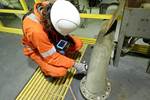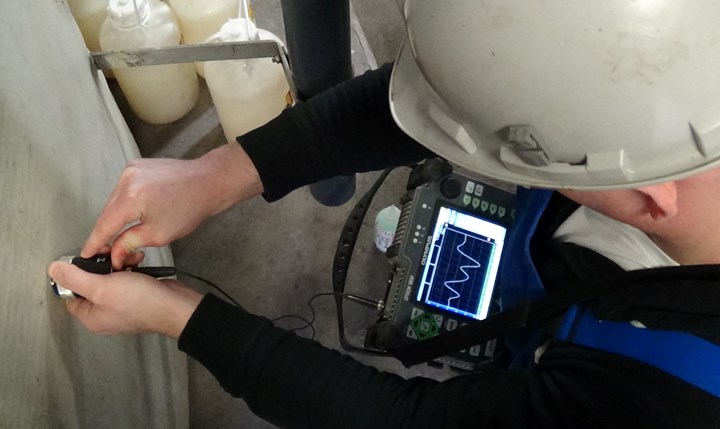UTComp authors bulletin on fitness-for-service assessment of FRP
Welding Research Council (WRC) Bulletin 601 provides technical background and validation for quantitative nondestructive testing methodology for FRP composite equipment.
WRC Bulletin 601 provides technical guidance and validation for using ultrasonic data to assess fitness-for-service of fiber-reinforced polymer (FRP) industrial equipment. Photo Credit: UTComp
A new Welding Research Council (WRC) Bulletin, authored by UTComp Inc. (Cambridge, Ont., Canada) founder and chief technical officer (CTO) Geoff Clarkson, provides reliability engineers with a technically valid, quantitative and repeatable process for evaluating in-service fiber-reinforced polymer (FRP) assets.
WRC Bulletin 601 — “Assessment of Existing Fiber Reinforced Polymer Equipment for Structural Damage” — describes the challenges and solutions involved in determining the condition and fitness for service of aging pressure vessels, piping and other equipment made from composite materials. For decades, reliability engineers and asset owners have had access to detailed inspection codes for destructive and nondestructive testing (NDT), including ultrasonic inspection, of in-service equipment made from steel and other alloys. However, there are currently no published consensus standards that can be used for damage assessment of FRP composites.
According to Clarkson, WRC-601 is a major step forward to address the gap in inspection standards for FRP assets. “Until now, there has never been a comprehensive resource that identifies the damage that occurs to the polymer and how to detect it in FRP equipment after it is in service, and nothing that provides a rational, quantitative basis for determining fitness for service of these assets,” he emphasizes. “With this Bulletin, for the first time we’re able to provide reliability engineers with a technically valid, rational and repeatable process for evaluating this critical equipment.”
Providing a safe, reliable and cost-effective method to assess fitness for service of FRP is essential, Clarkson adds, especially in the oil and gas sector where composite materials are widely used to store and transport hazardous materials, and protecting human safety and the environment are of paramount concern.
The WRC is a not-for-profit scientific research corporation and publisher of technical and educational material for engineers and reliability professionals. The hundreds of WRC Bulletins published to date document the technical basis for decisions regarding design and repair of pressure vessel equipment, as well as remaining service life and fitness for service estimations.
Clarkson says WRC-601 is structured to provide guidance for including new methods for assessing FRP equipment in the consensus codes developed by the American Petroleum Institute (API) and American Society of Mechanical Engineers (API 579-1/ASME FFS-1), which are focused primarily on fitness for service assessments of metal pressure vessels and piping.
“This bulletin is following in the footsteps of 600 other bulletins that inform the code, providing technical background and validation for a methodology developed over 20 years of assessing FRP and other polymeric materials used in pressure vessels, tankage, piping, vehicles, building structures and other assets in a wide range of industries,” he concludes.
Related Content
-
Acoustic imaging enables vacuum leak detection
CAMX 2023: Distran is demonstrating how its ultrasonic camera technology rapidly locates leaks during the vacuum bagging process, and reconstructs their position in real time.
-
Innovation in ultrasonic inspection and nondestructive testing
With increasingly complex structural components working their way into aerospace programs, the need for versatility in inspection and testing capabilities is growing.
-
Twenco develops sensors for smart molds and process control in resin infusion and composites welding
Non-invasive DEA and NDT Analyzer for multi-parameter monitoring, QA and control, including real time simulation feed and 3D process visualization across and through composite parts.

















